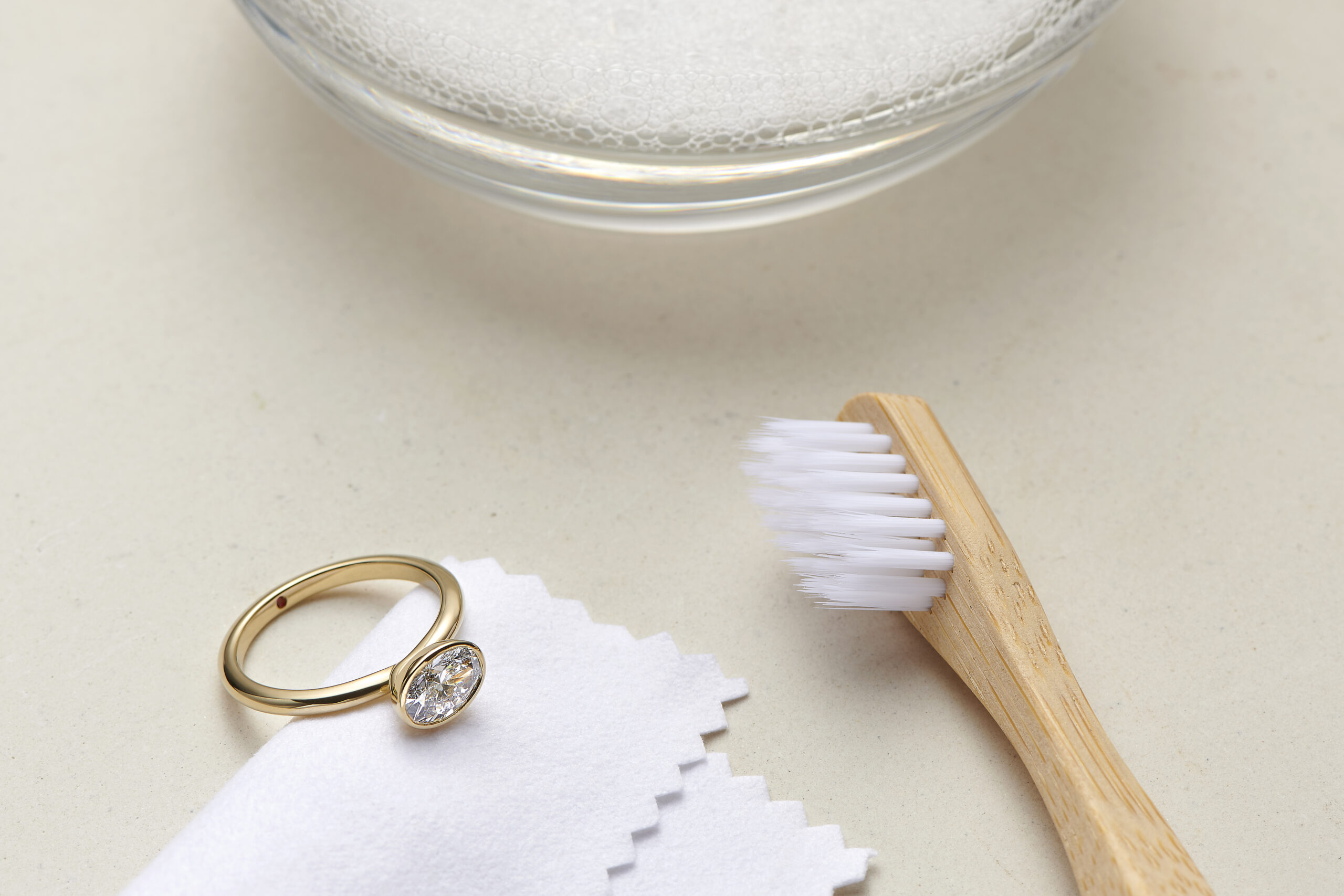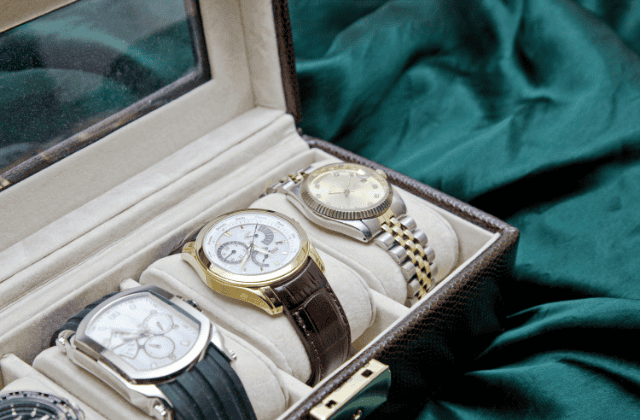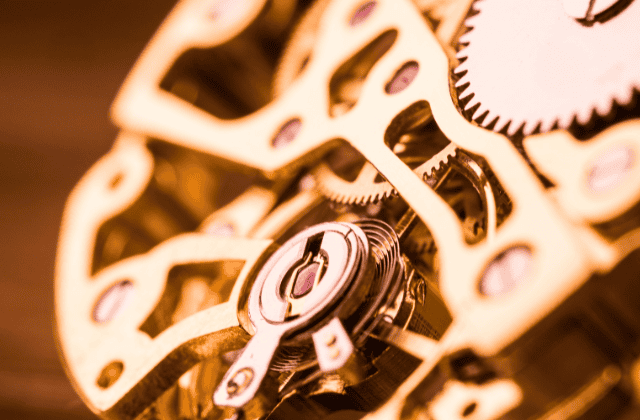Wondering if you should buy a G color Diamond? You’re in the right place.
I’ll go over everything you need to know before deciding to purchase a G color diamond grade and answer questions like these:

- Are G color diamonds good color grades?
- Does a color grade affect diamond durability?
- How can I get a G color diamond for less money?
What is a G Color Diamond?
A G color diamond is a diamond whose overall color is considered to be in the near colorless range. Near colorless diamonds consist of four color grades: G, H, I, and J.
Being the top of the range, a G color diamond is the closest to being colorless of all the near colorless grades. Above near colorless diamonds sits colorless diamonds with the color grades of D, E, and F.
Though G color diamonds aren’t the highest quality diamond color available, it’s important to know that majority of the world’s diamonds lie in the near colorless range. A G color diamond is the rarest of the near colorless color grades.
How Color Grades Are Determined
Color grades are given to colorless diamonds that exhibit yellow or brown tint when observed with the naked eye and under 10x magnification. Most diamonds have some sort of tint caused by nitrogen atoms entering the atomic structure as the diamond forms, creating tint in various degrees and depths within the diamond.
A diamond grade examines a diamond’s tint by looking at the hue, tone, and saturation. The hue is the color of the tint, the tone is how light or dark it is in relation to the rest of the diamond, and the saturation shows if the color is uniform throughout, which it rarely is.
In colorless diamonds, the brown or yellow tint is likely to be random throughout the diamond, which we call color zoning. You may notice yellow tint in the diamond more at different angles than others.
Color grading is a very difficult process because we all see color differently. Some people find a noticeable difference between a colorless diamond and a near colorless diamond while others really don’t see much of a difference.
In addition to the grader themselves, the lighting conditions need to be precise in order to award an accurate grade. The difference between one color grade and the one beneath it is usually a few hundred dollars. That’s quite a chunk to be missing if one of the diamond experts just didn’t feel good that day and wasn’t up to snuff.
For that reason, color grades are given to diamonds who have been compared to a set of master stones. Scientists at gemological labs are able to compare the diamonds to the master set in order to consistently sort them every time.
The GIA Color Grading Scale
The most famous gemological laboratories is the Gemological institute of america. The GIA is the world’s hub on the diamond and gemstone research, as well as the most respected diamond authority for diamond grading reports. They grade diamonds for commercial retailers and for consumers as well.
The GIA is responsible for creating the quality standards for diamonds, also known as the 4Cs. Diamond color, clarity, cut quality, and carat weight. Each one of these have an impact on diamond quality, price, and value. And each of them have their own varying degrees and scales.
The GIA Color Scale:

This scale is often called the D-Z scale and it is for detecting tint in colorless diamonds. This scale is not used for yellow colored diamonds. Or orange color diamonds for that matter. Fancy colored diamonds are graded differently, though the cause of the color comes from the same nitrogen origin.
Fancy yellow diamonds can be graded as light yellow, but it’s not the same as light yellow range colorless diamonds. In fancy yellow, the color is more pure and saturated. The same goes for fancy brown diamonds in relation to brown tinted colorless diamonds closest to the Z side of the scale.
G Color Diamonds vs F Color Diamonds
F color diamonds are right above G color diamonds on the color scale as the last color grade in the colorless range.
Typically, it’s very difficult to for the average person to notice the difference between one color grade and another next to it. It’s easier to see in every other color grade. For example, the difference But the drop from the colorless range to the near colorless range is easier to detect a slight difference. The
But if you’re not very sensitive to color, you may not even notice the difference if they’re not side by side. If you stick a G color diamond engagement ring in a yellow gold setting and you might think it’s colorless!
The price difference between the two diamonds usually ranges a 10% decrease/increase in price.


G Color diamond vs H Color Diamond
Personally, the H diamond color grade is where I really start detecting any tint, and usually only when it’s under magnification. H color diamond engagement rings are often sold as the highest color diamonds available in major chain retailer stores like Zales or Kay.
Both G color diamonds and H color diamonds are in the near colorless range. You can expect an H color diamond to have a stronger overall color than a G color diamond. I personally notice the difference from G to H easily at 40x magnification.
The price difference shouldn’t be a whole lot, usually a few hundred dollar from G color diamonds to H color diamonds. For many of the us, that could be a good savings.


G Color Diamonds vs D Color Diamonds
A lot of people wonder how the first color grade of the near colorless range compares to the highest grade of the colorless range. A D color diamond is the highest color grade available to colorless diamonds.
A D color diamond is very rare, especially as the carat weight increases. If set next to each other under magnification, you could see the distinction between the G color diamond and the D diamond. But if you put a G color diamond and a D color diamond under the same light, you might not be able to tell the difference, depending on sensitivity.
You can expect a major difference in price between D color diamond and G color diamond cost. Expect a 25% to 35% increase when buying a D color diamond over a G color engagement ring.


How Much Do G Color Diamonds Cost?
G Color diamonds are higher on the diamond color scale than many other diamonds on the D-Z color scale. They aren’t the highest grade available like a D color diamond, but they’re definitely not the lowest.
The average engagement ring in a retailer store generally has a color grade on the near colorless scale. Oftentimes it’s not as high as G color diamond, more likely to be an H color diamond or an I color diamond.
In general, it’s safe to assume that a G color diamond would be more expensive than diamonds with color grades beneath it. But it isn’t always the case. You can rely on this knowledge if all of the other diamond details are the same too.
But if they’re not, it’s possible for a lower color diamond like an H color grade to cost more than some G color diamonds. There are many details that can cause the price of a diamond to shift, not just a diamond’s color grade.
Remember the 4Cs? Well those all play a major factor in price, but there’s many other details too. Color grades are important, but they don’t affect price as much as clarity, cut, or carat weight.
Other factors that can have an impact (big and small) on the overall price of G color diamonds are:
- Diamond shape
- Certified diamonds
- Branded diamonds (Hearts on Fire, Leo First Light, Sakura Diamond)
- Specialty cuts (Super Ideal Cut Diamonds, Hearts and Arrows)
- Buying in-store vs online
- Fluorescence (another color effect in diamonds)
- Lab grown diamonds vs mined diamonds
Depending on its other diamond specifics, you can expect G color diamonds to range from
Save On G Color Diamonds with Lab Grown Diamonds
Maybe the price of G color diamonds is still too much for your budget and you really don’t want to go much lower than that. Or maybe you happened to be more concerned about the legitimacy of diamond origins.
If either of those are the case, lab grown diamonds might be the perfect option for you. And even if you don’t fit either of those categories, it might be hard to pass up a 20-40% decrease in cost for the same diamond quality.
Lab grown diamonds are real diamonds formed under the same conditions as it takes for diamonds to form in the earth. The conditions are simulated in an isolated environment, and diamonds are produced. Lab diamonds reflect light, have the same grades, and overall same composition as mined diamonds.
You might wonder what’s the catch that makes lab created diamonds so much less expensive if they’re nearly the same.
Well, they’re not as valuable. Rarer grades in mined diamonds aren’t as rare in lab diamond form. But if you’re not planning to resell your G color lab grown diamond, then who cares? The dollar value of your diamond ring should only matter to you when you’re purchasing.


Additionally, most retailers that sell mined and lab grown diamonds tend to only offer upgrades and trade-ups for mined diamonds. The price of lab grown diamonds continues to drop and fluctuate, so they don’t make good investments at all.
Is a G Color Diamond Engagement Ring a Good Choice?
A g color diamond is a great choice for an engagement ring. Being at the top of near colorless color range, it’s most likely to appear as colorless as a D color diamond to the naked eye.
Under magnification, maybe not as much. But no one’s going to be looking at your diamond under magnification except during the purchase process. Most people are going to see your engagement ring in a normal environment without equipment.
And remember, the price difference can be pretty big between a G color diamond and a D color diamond. And if you can’t tell the difference in standard lighting, why pay for what you can’t see or notice?
Even if G color diamonds are just a bit too expensive for your liking, you have the option of choosing ethical engagement rings with a lab grown G color diamond.
A G color diamond will still appear nearly colorless whether it goes in a white gold, platinum, yellow gold, or rose gold setting. It’s the perfect color grade if you’re not really wanting to have to use tips and tricks to make lower color grades look closer to G color diamonds.

But what if both a G color diamond and a lab grown G color diamond are still just out of the price range for you? Or maybe your spouse to be just really wants an ethical natural diamond. There’s nothing wrong with that either.
We’ve got options for you too.
Overall, any color grade in the near colorless color range is a great option for a diamond color grade.
Why Lower Color Grades Make the Better Value
But if you’re really trying to get the best price on a diamond without too much of a faint yellow tint, you may choose other color grades in the same range. H color diamonds, I color diamonds, and J color diamonds are all part of the near colorless range, but I color diamonds and J color diamonds exhibit more of a tint.
But when put into a yellow gold or rose gold setting, they appear a bit brighter. In the same fashion, even faint yellow tint color grades like KLM can look near colorless when put into yellow or rose gold settings.
If you choose a lower color grade (I-M), know that a platinum or white gold setting will make your diamond’s color tint more noticeable. Fortunately with a G color diamond, you don’t have to worry about influencing your diamond too much either way.
Your chosen diamond shape can have an impact on the way your diamond displays color. A round brilliant cut diamond is optimized to reflect light. When more of your budget is put toward having excellent cut quality in a round brilliant cut, the white light and rainbow light can deter some of the yellow tint from a lower color grade.


Then there are other shapes that reveal yellow color more. Not only do round cut diamonds have the ability for perfect symmetry, they also have a smaller face up view. Other diamond shapes with bigger face-up views make diamond colors more noticeable.
In the same fashion, don’t select a ring setting with smaller diamonds if you’re wanting a lower color grade to appear less yellow. It’s more likely you’ll have higher color diamonds in the halo of a halo setting than what you chose for your center diamond.
A G color diamond is a great choice for an engagement ring. It’s a better value than buying a D, E, or F color grade because of its lower price with minimal difference.
But buying a G color diamond might not be the best value for everyone. H, I, and J color diamonds are less expensive but may look a little tinted depending on your sensitivity to natural color.
My best advice is too not dedicate too much of your ring budget into color grades. What I’ve found that happens most often is people observe other diamond factors. They pick the diamond that looks the best to them, not necessarily with the best grades. And since diamond color doesn’t affect durability of everyday wear, I think there’s a lot more we could be focusing on, such as your cut quality or diamond clarity.





